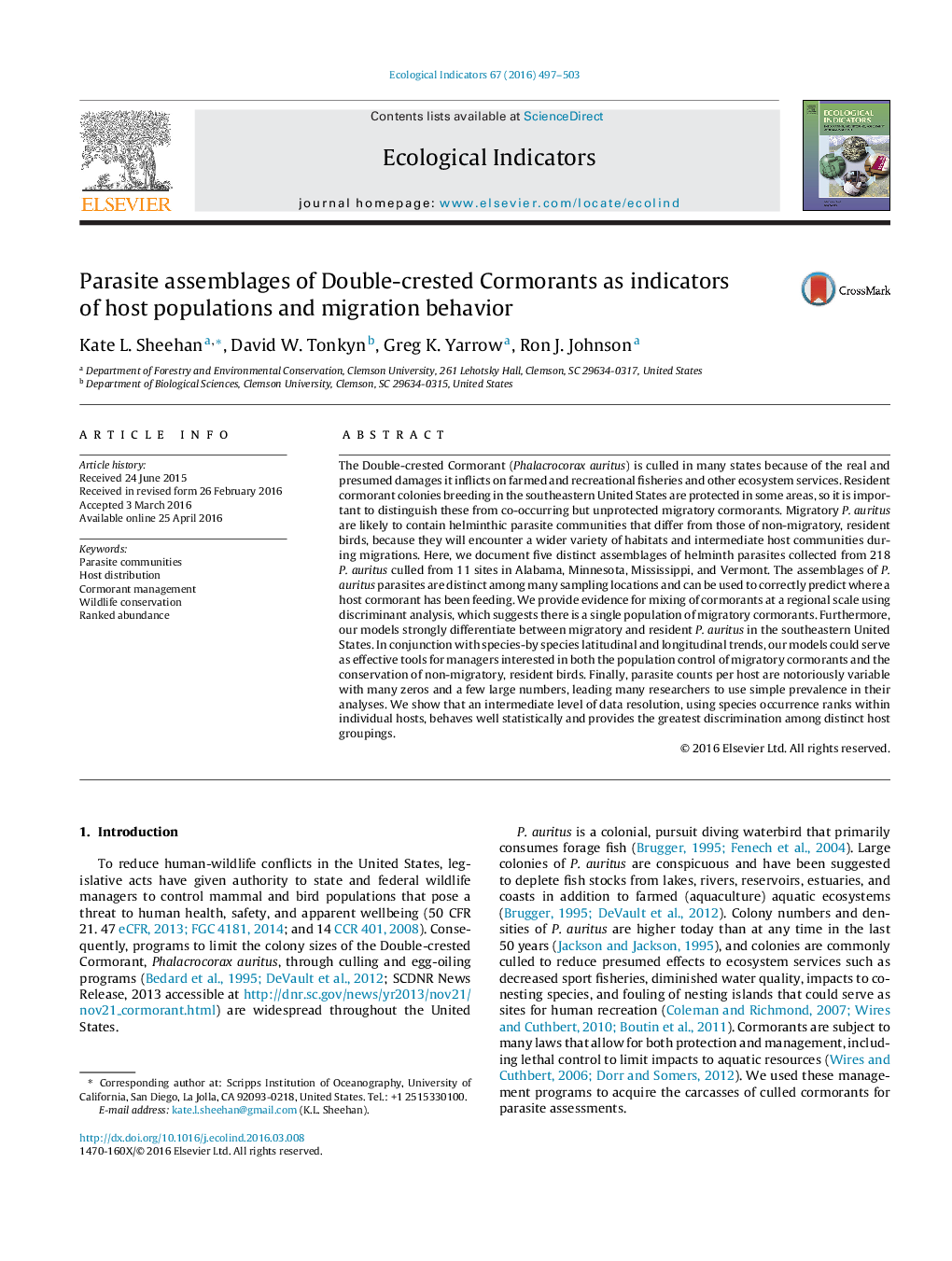| کد مقاله | کد نشریه | سال انتشار | مقاله انگلیسی | نسخه تمام متن |
|---|---|---|---|---|
| 4372897 | 1617135 | 2016 | 7 صفحه PDF | دانلود رایگان |
• The separation of cormorant populations and subspecies in the eastern US is debated.
• Intestinal parasite communities are informative of cormorant site of collection.
• Parasite communities are similar among cormorants from eastern and central flyways.
• Parasites can be used to identify migratory and resident cormorants.
• Data ranked on parasite abundance perform better than parasite intensity or prevalence.
The Double-crested Cormorant (Phalacrocorax auritus) is culled in many states because of the real and presumed damages it inflicts on farmed and recreational fisheries and other ecosystem services. Resident cormorant colonies breeding in the southeastern United States are protected in some areas, so it is important to distinguish these from co-occurring but unprotected migratory cormorants. Migratory P. auritus are likely to contain helminthic parasite communities that differ from those of non-migratory, resident birds, because they will encounter a wider variety of habitats and intermediate host communities during migrations. Here, we document five distinct assemblages of helminth parasites collected from 218 P. auritus culled from 11 sites in Alabama, Minnesota, Mississippi, and Vermont. The assemblages of P. auritus parasites are distinct among many sampling locations and can be used to correctly predict where a host cormorant has been feeding. We provide evidence for mixing of cormorants at a regional scale using discriminant analysis, which suggests there is a single population of migratory cormorants. Furthermore, our models strongly differentiate between migratory and resident P. auritus in the southeastern United States. In conjunction with species-by species latitudinal and longitudinal trends, our models could serve as effective tools for managers interested in both the population control of migratory cormorants and the conservation of non-migratory, resident birds. Finally, parasite counts per host are notoriously variable with many zeros and a few large numbers, leading many researchers to use simple prevalence in their analyses. We show that an intermediate level of data resolution, using species occurrence ranks within individual hosts, behaves well statistically and provides the greatest discrimination among distinct host groupings.
Figure optionsDownload as PowerPoint slide
Journal: Ecological Indicators - Volume 67, August 2016, Pages 497–503
